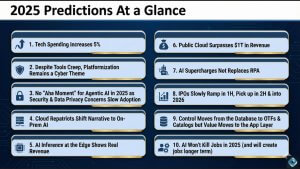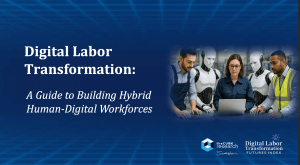ABSTRACT: As enterprises grapple with the increasing complexity of cloud-native and AI-driven systems, Dynatrace’s 3rd-generation observability platform redefines how organizations manage operations, security, and business performance. By layering deterministic and generative AI, Dynatrace delivers real-time, context-rich automation that supports SREs, DevOps, platform engineering, developers, and business stakeholders. Telus provides a compelling case study, showing how the platform helped reduce vulnerability counts, accelerate issue resolution, and empower business teams with live operational insights. This brief explores how Dynatrace enables autonomous operations at scale and turns observability into a strategic asset for innovation and resilience.
Organizations today face an inflection point where digital complexity is soaring, and both technical and business leaders need real‑time insights to compete. Dynatrace’s 3rd‑generation platform has been purpose‑built for this new era, delivering automation, security, and business observability through layered AI, a combination of deterministic reasoning and generative, agentic AI.
The Layers of AI Driving the Third‑Generation Platform
Dynatrace evolved beyond first‑gen observability and second‑gen automated root‑cause analysis into a third generation that introduces autonomous intelligence. At its core are three layers:
- Technical Layer: High‑quality data, causal dependency graphs (SmartScape), and a real‑time data lakehouse. This allows deterministic AI to understand events, security vulnerabilities, and infrastructure behavior across millions of containers and services.
- Collaboration Layer: Agentic AI workflows that auto‑route issues, generate test cases, and integrate into developer tooling, reducing toil and accelerating remediation.
- Business Layer: A logical business context layer overlaying technical signals with business events, enabling visibility into how technology decisions impact revenue, customer journeys, and operational KPIs.
“Dynatrace’s 3rd-generation observability platform represents a significant leap forward in managing the complexity of modern, cloud-native, and AI-driven environments,”
Rob Strechay, Managing Director & Principal Analyst, Cloud Native, Data Platforms, Infrastructure, theCUBE Research.
“By unifying data and automating workflows with advanced AI capabilities, Dynatrace empowers enterprises to not only address operational challenges but also enable autonomous operations at scale. This approach is redefining how organizations turn complexity into clarity, unlocking new opportunities for innovation and driving measurable business outcomes.”
Telus: Overcoming Observability Challenges
Telus, a Canadian telecom serving millions, provides a vivid case study. A decade ago, Telus embarked on a DevOps transformation, modernizing its monolithic infrastructure and migrating to the cloud. The goal is to deploy often, improve reliability, reduce OpEx, and sharpen customer focus. As Director of Site Reliability, Kulvir Gahunia explains, their complexity demanded “a great observability platform to see what’s going on, provide insights, and make data‑driven decisions for the business.”
Before adopting Dynatrace’s 3rd-Gen platform, Telus struggled with fragmented signals, siloed tools, and a reactive posture. Key challenges included:
- Limited visibility: Traditional monitoring provided siloed metrics without business context.
- High MTTR: Developers spent excessive time debugging and triaging incidents.
- Scaling complexity: Cloud‑native adoption brought tens of thousands of pods and services, compounding interdependencies.
How Dynatrace Gen3 Helped Telus Transform
By leveraging Dynatrace’s layered AI platform, Telus addressed these challenges across both technical and business domains:
Empowering SREs, DevOps, and Developers
- Faster Remediation: Using Dynatrace’s Grail data lakehouse, live debugger, and trace‑injection tools, Telus cut debug time from 45 minutes to two minutes and demonstrated full incident‑to‑pull‑request resolution in under 15 minutes.
- Shift‑Left Security: Dynatrace’s vulnerability management enabled a 30% reduction in open vulnerability counts and 40% fewer distinct issues, reinforcing a DevSecOps culture.
- Developer Experience: A custom-built Dynatrace Model Context Protocol (MCP) integrates with Visual Studio Code, empowering developers to query observability data in natural language and automate investigative workflows.
Extending Value to Business Users
Telus isn’t just using Dynatrace as an IT tool. With business events layered on top of technical data, marketing and operations teams gain real‑time insight into sales, carts, and order-to-cash processes. During critical events like Black Friday, they can proactively adjust campaigns, monitor product performance, and prevent customer experience disruptions—long before alarms would traditionally fire.
Innovation Through Partnership
Telus has been a Dynatrace customer for 13 years and actively co‑innovates, previewing features such as live debugger and Real User Monitoring on Grail before release. This collaboration has helped Telus move from event‑focused readiness (e.g., iPhone launches) to always‑on operational resilience.
Our ANGLE
Dynatrace’s 3rd-generation platform is a significant evolution in observability, moving beyond monitoring to deliver autonomous operations through layered AI. We believe this is a pattern that is required for observability, with the evolution of AI-enabled and Agentic applications, the need to combine deterministic logic, such as causal graphs, with generative and agentic AI techniques. This allows Dynatrace to enable trustworthy automation and real-time business insight for its customers. Organizations like Telus demonstrate the transformative potential of this approach, achieving faster incident resolution, improved developer productivity, and stronger security postures with measurable reductions in vulnerabilities. The integration of observability into developer tools and business workflows shows how the platform empowers both technical and non-technical users, shifting from a reactive model to proactive optimization. We see business observability is emerging as a critical capability, with real-time metrics driving better operational and strategic decisions. As cloud-native and AI-driven complexity scales, platforms like Dynatrace must unify data across millions of services while maintaining context. We see Telus’s experience as illustrative in how close collaboration with Dynatrace accelerates innovation through early feature adoption. Ultimately, we believe that Dynatrace is helping organizations transform observability from an IT-centric function into a cross-functional intelligence engine that supports innovation, resilience, and business growth.
Feel free to reach out and stay connected to Rob through robs@siliconangle.com, read @realstrech on x.com, and comment on our LinkedIn posts.
Disclosure: TheCUBE is a paid media partner for Dynatrace, the sponsor of theCUBE’s event coverage, nor other sponsors have editorial control over content on theCUBE Research, theCUBE, or SiliconANGLE



